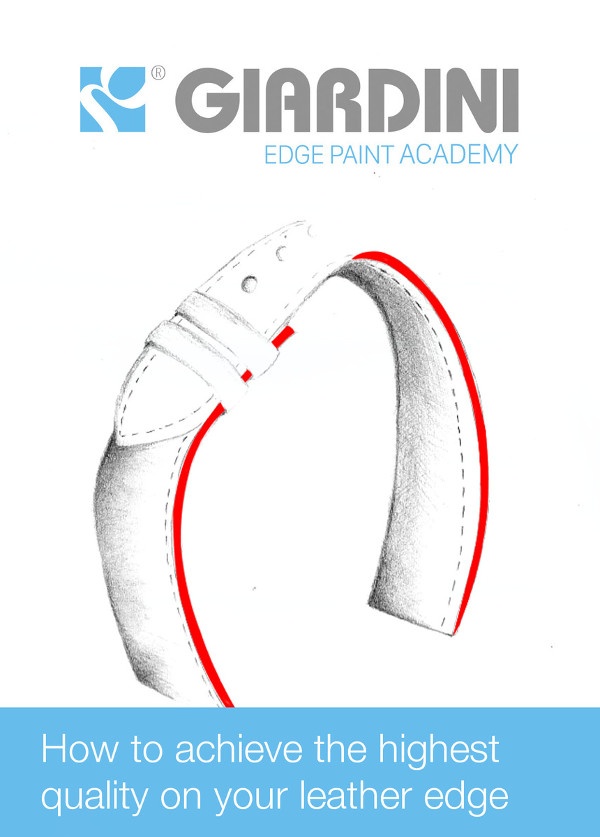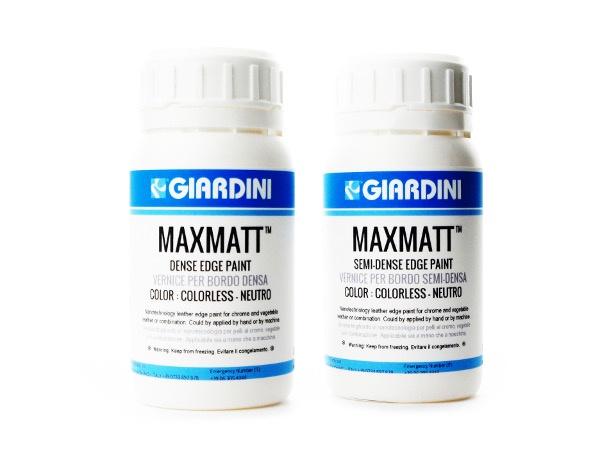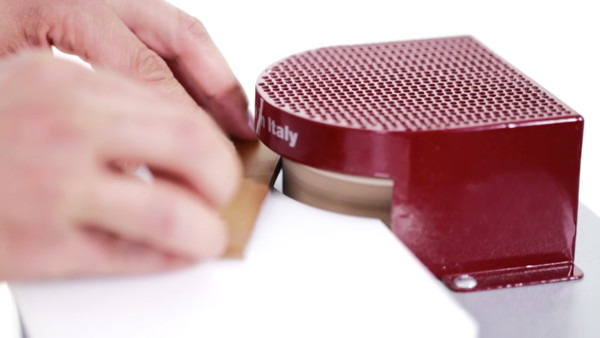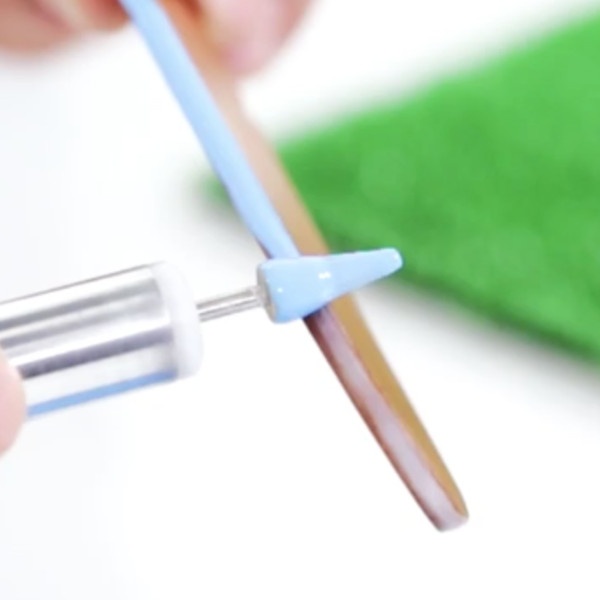In this document you will learn:

Click the link to go directly to a specific topic.
What are the main features of a high quality leather edge?
The new process for Leather Edge Painting
Step 3: Coloured Edge Paint Application
The leather edge quality has always represented an assessment factor between different manufacturers in the leather goods world. So, when you create a new item is necessary to pay special attention to this detail that can make the difference between high quality product and ordinary item.
For this reason the high quality manufacturers dedicate much attention to this detail and great number of operations on its finish, making it appearing almost perfect and increasin by this way the value of their product.
The evolution of leather edge paint has the aim to give to leathercrafters new opportunities for leather edge finishing, increasing the leather edge quality and decreasing the working-time to achieve it. This guide has been pursued to provide a clear indication on new leather edge finish techniques.
The beauty of a handmade leather good and its quality are determined by the attention in the care of its details, and what greater detail if not the leather edge?
To achieve a leather edge in high-quality is necessary to pay attention to many details, the leather edge surface has to be uniform, as if it were a natural continuation of the surface of the leather; it must be completely smooth without presenting imperfections of any kind and the color should completely coat the leather surface without leaving a glimpse of the above substrate.
Last (but not least) a high quality leather edge should have high performance in resistance to mechanical stress and according to nowadays be as much sustainable as possible. Therefore we can resume the key features that distinguish the quality of a board as: Smoothness, Nice Look, Coating lower substrate, Resistance to mechanical stress, Sustainability.
Simple is better. During our last years of development spent gaining experience side to side with many manufacturers during their own working phases, we realize that a simple process is more repeatable. Starting from simplicity as one of our final goal we developed products that can avoid as much phases as possible to leather crafter, without affecting but improving the final result and its quality.
The new suggested process for leather edge finishing is composed of only four steps, as shown in the workflow below.

The basecoat is a colourless paint designed to be used as a first coat in the leather edge finish. Its purpose is to prepare the leatherì edge for the following operations of colouring: its main feature are to adhere to the underlying leather and ensure a high performance adhesion, then it should fill all the empty spaces on the leather edge surface in order to present externally a smooth and uniform edge.

In the application phase it appears to be whitish in color and once dried has a semi-transparent color and a very solid consistency. Once completely dry, the basecoat can be worked using a brush, a scotch-brite cloth or a sand paper (we recommend a very fine grain). This operation can be performed if you desire to get a very smooth edge, without any imperfection
The sanding/buffing operations are necessary to get the leather edge surface completely unifrom, by removing those small imperfections which can be determined by a not quite perfect cut. The small leather hair are incorporated in the basecoat and will be removed together with the basecoat when the surface is sanded, this will allow you to have a leather edge perfectly ready to the dyeing step.

Buffing or sanding can be performed either manually or with the aid of suitable machinery. For manual operation we suggest to use a scotch-brite cloth or a fine grain sandpaper, while if you have available rotary brushes definitely your work will be faster.
All Coloured Edge Paint of MAXMATT and MAXEDGE series have been developed and tested to be applied above the Basecoat in order to get the best finishes. As final layer you can even use paints from other brands but we suggest to first test them for compatibility. Anyway, we already performed numerous tests using, as final coloration, the most popular leather edge dye from other brands, and the final result was always positive, with an increase of leather edge final quality, an increase of resistance/adhesion and a reduction in working time.

The edge look is determined by the final layer. Basing on your desired look, you should choose the right product. GIARDINI offers a wide range of products that combined together can give different effects, if you want to get a matte, glossy, extra-matte, glitter, metallic or fluorescent look. You can learn the techniques to achieve various effects by viewing video tutorials available on our website and YouTube channel.
Sometimes when you have completed the step 3, there could be some paint that flows out on the side of your leather edge. If you pay attention during the painting process you can be warned of this while the paint is still wet, and in this case you can remove the paint in excess on your leather edge simply using your finger or the latest machine developed. In alternative you can proceed by an angled sanding, just to make your edge pefect.
By this simply shrewdness, you will got a perfect edge without any imperfection. The Leather Edge could be also finished on Cork or Faux Leather.
If you want to know how to clean the Leather Surface and where drop it off after dyeing, check in our blog.